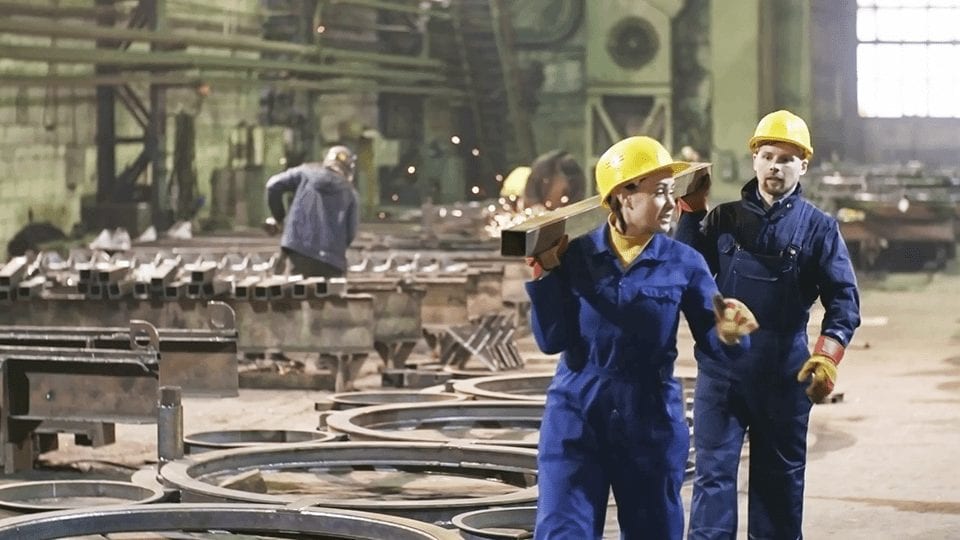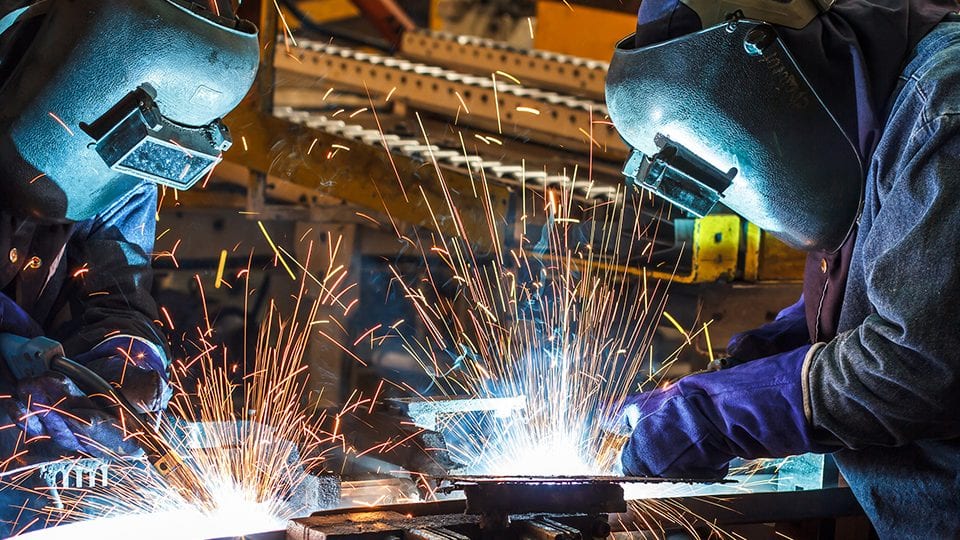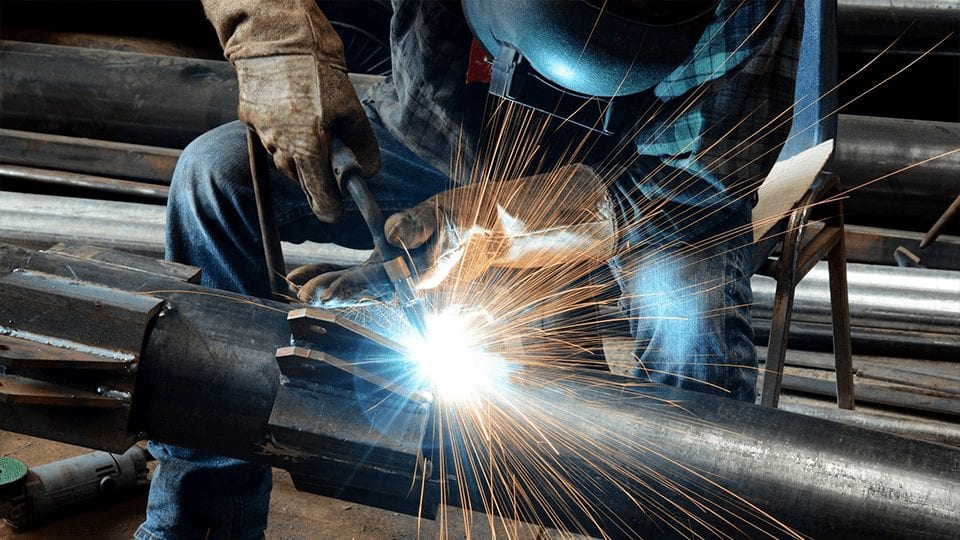mprove Indoor Air Quality
How to Improve Indoor Air Quality at Your Warehouse
Good air quality essential
Benefiting from Clean Air
The quality of the air we breathe has a direct impact on our health and wellbeing.
While most environmental concerns are related to the quality of outdoor air, the quality of indoor air is equally crucial and important.
According to a study by Australian government, Australians spend 90% or more time indoors. So the quality of indoor air has a long-term impact on our overall health and well-being.
The quality of indoor air at industrial facilities such as warehouses is of particular importance. Warehouses, with their high ceilings and expansive indoor spaces, may seem well-ventilated and appear to house clean air but that is often not the case.
A variety of pollution sources and contaminants are routinely produced and harboured in the indoor air at warehouses.
They may be produced by the equipment or machinery, industrial processes, fuel burning appliances and other sources.
Common pollutants typically found in indoor air at warehouses include carbon dioxide, carbon monoxide, nitrogen oxides, toxic mould and dust particles. When combined with a humid environment, these particles may combine with water to become heavier and become more of a health hazard.
Over time, indoor air pollutants can create health risks, lower energy efficiency, open your business to liabilities and litigation, and incur many other long-term costs. This is why it is important to understand, identify and counter such pollutants on time.
Here is a look at some of the most common causes of indoor air pollution in Australian warehouses. This article also includes the preventive strategies and active measures you can to take counter indoor pollutants and maintain healthy air quality at a warehouse.

Causes: Indoor Air Quality
Petrol vs LPG Forklift
Forklifts are typically used for picking up and dropping off goods at a warehouse from one place to another. They are one of the most common pieces of equipment found at warehouses across Australia. While being very handy and useful, forklifts also serve as one of the most common sources of indoor air pollutants.
Most forklifts operate on petrol, liquefied petroleum gas (LPG) or diesel. When consuming fuel, the forklifts release harmful emissions into the air. The volume of these emissions may depend on the nature of the operation and the maintenance of the forklifts. The internal combustion engines installed in most forklifts consume fuel in a way to provide fumes like carbon monoxide. As warehouses are typically sealed to maintain indoor temperatures, the fumes from forklifts can accumulate and affect the quality of the air.
Even in the best of forklifts, these pollutants are produced during operation if the engine is not well-maintained. Idling forklifts, in particular, are prone to producing harmful fumes that can pose a serious health hazard to warehouse workers once they accumulate indoors. The only exception is electric forklifts which typically produce little to no harmful fumes.
Chemical Process
Many warehouses house different industrial and chemical production processes. These processes inevitably produce various toxic or harmful fumes, gases and other by-products. Although the by-products should ideally be ventilated effectively, this is often not the case. The harmful pollutants found their way into the indoor air of the warehouse. These fumes in sufficiently large amounts can be very harmful. Gases from combustive processes such as nitrogen dioxide and carbon monoxide as well as accidental chemical spills can also add pollutants to the indoor air at a warehouse.
Poor Maintenance
In addition to harmful gases and industrial by-products, there are other pollutants that can affect the quality of indoor air at a warehouse. The build-up of moisture often encourages the growth of such pollutants like mould and bacteria. Moisture can also worsen the presence of dust and debris. Once combined with the water content, these particles become heavier and are most likely to clog HVAC, affecting the ventilation systems of your warehouse. Moisture build-up can also encourage the growth of mould in the floor, walls, furniture, or other structures. Over time, mould releases harmful particles into the air which, when breathed by warehouse workers, can lead to health issues.
Poor Ventilation
Ventilation is typically preferred as the most viable option of ensuring good indoor air quality. Buildings with good ventilation usually have a better quality of indoor air than those without proper ventilation, unless the outdoor air is polluted. The most notable advantage of ventilation is that it routinely replaces a batch of indoor air with a fresh batch of indoor air. So it effectively prevents the accumulation of any adverse contaminants or pollutants. This is particularly useful at warehouses where forklifts operations are extensive or any chemical processes take place.
No Air Quality Monitoring
Regular monitoring of indoor air quality can reveal what pollutants exist in what quantity. This enables warehouse management to take effective measures to combat the pollution. In contrast, if no routine monitoring equipment and mechanism exists, air contamination will often go unnoticed. This is particularly true when odourless gases like carbon monoxide are the main pollutant.

Controling Air Quality
Indoor Air
In order to control and improve the indoor air quality at a warehouse, you will typically need to implement three sets of strategies. These strategies must be implemented concurrently to achieve desirable results.
The Three Areas Include:
- Management of Air Pollutants. Sometimes, the production or presence of air pollutants will be inevitable. An example is the industrial or chemical processes at a production facility. So your best bet would be to manage them. Management can be done in a variety of ways. You can isolate the pollutants, remove them altogether from a warehouse, or simply control the timing of their release.
- Dilution & Ventilation of Pollutants.If production of airborne pollutants is inevitable at a warehouse, another great strategy is to use ventilation. Proper dilution and ventilation must be efficient enough to remove air pollutants within a designated time frame.
- Filtration of Indoor Air. Air filtration is another effective way of ensuring healthier indoor air, although this method may cost more and have a more limited utility without other solutions like air ventilation and containment.
Indoor Air Pollution-Australian Stats
Indoor air pollution is one of the key environmental concerns in Australia. In fact, it is counted among the top 5 environmental risks to public health. Every year, more than $12 billion are lost in lieu of the cost of poor indoor air quality.
This number is only expected to rise in the coming years. Among the leading indoor air pollution causes are lack of ventilation, moisture build-up and growth of mould or bacteria, and pollutant sources indoors such as fuel burning appliances.
All of these can adversely impact the indoor air and make it hazardous for health.
Typical health problems associated with poor indoor air quality include irritation of skin, symptoms related to odour and taste, hypersensitivity, itchiness, and an irritation of throat and eyes.
Other symptoms may include drowsiness and chronic headache. When found as chronic symptoms, the associated health issues are often diagnosed as ‘sick building syndrome’ and considered as indoor air pollution effects.

Improving Air Quality
Proper Ventilation – Nearly all experts and leading environmental agencies agree that one of the most effective methods of improving indoor air quality is by using proper ventilation. Good ventilation can effectively replace indoor air with fresh outdoor air on a regular basis. This prevents the accumulation of any contaminants or pollutants. A variety of ventilation options are usually available for warehouses, although roof ventilation is often the best choice.
Roof ventilation can be done with the help of whirlybirds. In addition to effectively ventilating the indoor spaces, whirlybirds also come in air-powered models which can save energy costs. As a result, you essentially have no running costs of using such a ventilation solution.
Good roof ventilation offers another notable advantage. It can regulate the indoor temperature at a desired level. An optimum indoor temperature is helpful in combating indoor air pollution as it prevents the growth of bacteria or mould. Spaces which are not properly ventilated may become warmer, develop moisture and become hotbeds for the growth of toxic substances like mould. Roof ventilation hauls away the moisture, maintains a good temperature and effectively removes air with contaminants.
Good ventilation also helps you maintain a positive air pressure inside the warehouse. A positive pressure is when the air pressure inside the warehouse is greater than the pressure outside. When this is the case, the stale or contaminated air from inside rushes outside and is replaced by the fresh air from the outside in turn.
The operations and circumstances of a warehouse may wary from one facility to another. And you will typically need some degree of custom control over the operation of a ventilation system. In such a case, you can use an active whirlybird instead of a passive one. An active whirlybird is powered by both wind and an electric power source, so that you can operate it even when no wind is blowing. You can also turn it off when ventilation is not required.
Filtration & Cleaning
Air filtration is another way of maintaining healthy indoor air quality at a warehouse. A huge range of commercial and industrial air filters are typically available. You can also choose from different types of air filtration and purification units. Some units offer a more basic form of filtration, removing gases and dust particles. Other may prove more effective in environments where mist, oil, fumes and other airborne impurities are routinely produced as a result of industrial processes.
You should consider the exact circumstances of your warehouse before making the final choice. When done right, air filtration can be very effective in removing pollutants from the indoor air and rendering it healthier for the workers.
Isolation of Pollutants
Prevention and mitigation of the pollutants produced at a warehouse can also go a long way towards improving the indoor air quality. This is particularly true for warehouses where it is inevitable for the daily activities and routine processes to create harmful airborne byproducts. The operation of fuel-powered forklifts, for instance, will inevitably cause the emission of harmful fumes. Similarly, a production facility can’t avoid producing the toxic byproducts in a routine production process.
When this is the case, isolation and containment are very useful. You can compartmentalize different portions of a warehouse and then use proper sealing techniques to isolate them. It is important to make sure the sealing is done right so that no air escapes from one portion to the other. You can also use separate ventilation solutions for different portions.
Indoor Air Testing
The presence of pollutants and contaminants in the air of a warehouse will often go unnoticed for a long time. This is often simply because businesses do not have the proper equipment and procedures in place to detect the presence of air pollutants. This is a dangerous lapse as airborne pollutants, if not handled over a long time, can create chronic health problems for the workers at a warehouse. It also exposes the business or warehouse management to potential litigation from the affected workers.
If you wonder how to determine indoor air quality, a simple and easy way is the use of specialized instruments that can monitor air quality. If you are able to afford such instruments, you can purchase them and have them permanently installed at the warehouse. However, it is important to choose the right equipment that can test for the impurities which are likely present at a given warehouse. If your warehouse houses industrial processes and production, for instance, you may want to get equipment that can test for the byproduct fumes and gases like carbon monoxide. When the extensive use of stoves or fuel burning appliances is the case, testing for nitrogen oxide should also be done.
Typically, air quality testing equipment will let you measure the concentration of carbon dioxide and carbon monoxide, presence of humidity, changes in temperature, and the presence of other airborne particles like dust. It is immensely useful to have this information. Once you know which impurities are polluting the indoor air, you can then create suitable strategies and take measures to handle them.
Air quality testing equipment is also available on rent for one-off testing. This is particularly suitable for businesses and warehouses on a limited budget. You can rent the equipment and test the indoor air without investing in a full purchase. This lets you routinely monitor the air quality and take steps to counter airborne pollutants.
Facilities Management
Equipment and machinery such as forklifts produce more harmful emissions when they are not properly maintained. An effective way of controlling and mitigating such emissions is to maintain such machinery on a regular basis. Stoves, engines, and any other equipment involved in gas-emitting processes should be routinely inspected for running efficiency. Losses in efficiency are directly related to an increase in the amount of emissions.
At the same time, it is a good idea to make sure that forklifts and other machinery does as little idle running as possible. Idle operations lead to a greater release of harmful emissions. This is particularly true for forklifts, especially the ones that run on diesel. You can also implement other best practices that mitigate the impact of forklifts on the quality of indoor air.
Other facilities at a warehouse must also be properly maintained to ensure healthy indoor air. HVAC systems, refrigeration units, and any other components that use water or are responsible for draining it must function efficiently.
Problems with HVAC and other drainage systems can cause moisture build-up which in turn can promote the growth of mould and bacteria. These growths then release harmful particles into the air adversely affecting the air quality. Moisture can also cause harm to the furniture, walls and ceilings. Optimizing drainage systems is a quick and easy way of preventing moisture buildup and the associated problems.
Green Landscaping
A very sustainable way of improving indoor air at a warehouse is the use of green landscaping right outside the facility. Green landscaping around the warehouse can be very beneficial in producing oxygen and absorbing pollutants like carbon dioxide. However, in order for green landscaping to have an impact on indoor air, it must be used in combination with a solution like ventilation. Indoor plants can also be used although you will need to get creative to use them in a facility like a warehouse.

Improving Air Quality?
Improving the indoor air quality offers a wide range of benefits. For warehouses, these benefits include the following:
Lower Costs
Poor indoor air quality and the presence of moisture can encourage the growth of bacteria and mould. Toxic mould can also find breeding places in walls, furniture and other areas within a warehouse. If not treated in time, it not only contaminates the air but also causes harm to the affected areas and structures. This leads to higher maintenance and repair costs. When air quality and moisture are maintained at an optimal level, this discourages the growth of mould and prevents the onset of the extra maintenance costs.
Better Productivity
The air we breathe has a direct effect on our physical and mental well-being. It can make us alert or lazy, depending on the quality of air we breathe. A number of studies show that the quality of indoor air is directly related to the performance and productivity of the workers.
The presence of pollutants and contaminants in the indoor air at a warehouse, for instance, may make workers lazy, cause them to cough and be irritated more often, and impact their performance. Over long-term, it can also create chronic problems such as itchiness. These may seem like minor health problems but they can have a real impact on the productivity of the workers. They can also lead to more accidents in the workplace.
Clean and healthy air quality at a warehouse, on the other hand, helps workers maintain an alert mental state. Healthy air quality means less concentration of pollutants and a greater percentage of oxygen. More concentration of oxygen helps in better mental performance of the workers. They are able to perform tasks better, make decisions quicker, and process information more effectively. As a result, they are able to get more work done in less time and minimize the instance of workplace accidents.
Liabilities Protection
Proper maintenance of facilities and the workplace environment is the responsibility of the warehouse owner or management. If there are lapses in maintenance, the responsible party may be held liable. The failure to check for the growth of mould, in time, may void any insurance policy that could cover the loss.
Similarly, the quality of the indoor air at a facility is the responsibility of the employer at a warehouse. Poor air quality can lead to various health hazards and risks. Workers may develop temporary or permanent health issues after breathing the unclean air day in, day out for years. When such health issues are identified and correlated with the warehouse air quality, workers may be entitled to seek damages from the employer. This exposes an employer to litigation and liability.
Timely maintenance of air quality and suitable measures for maintaining a healthy air not only help maintain good health of your workers, it also protects you against legal problems down the road.
Lower energy cost
When impurities exist in the indoor air, the HVAC system has to exert more to remove them. The air conditioning and heating also have to exert more, and you may need to schedule HVAC maintenance more frequently due to a greater risk of particle deposit in filters. On a yearly basis, this can significantly bump up the energy costs at a warehouse.
One of the benefits of good air quality is better energy efficiency. HVAC systems have to exert less to process, ventilate, cool, or heat cleaner air. They also have a lower instance of clogged filters when the concentration of airborne particles is lower. All of this can be achieved with strategies and measures listed above to improve quality.

Residential Services / Whirlybirds / Direct Vents / Rain Heads / Eave Vents / Solar Powered Vents
Why choose Us?
Competitive Prices
Our pricing is transparent and highly competitive. We do our best to take the guesswork out of the final cost at the beginning.
Warranty
We take pride in our workmanship and are proud to warranty our workmanship for 5 years, in addition to the manufacturer’s warranty.
30 years of experience
Nothing says commitment like longevity! We are proud of our commitment to our craft and our customers.
residential and commercial roof solutions
We answer all calls personally – 24 hours, 7 Days a week.
